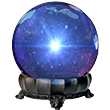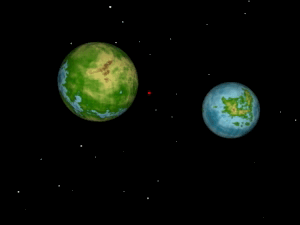Most Saints pay little heed to such things in their gospel study, seeing it as irrelevant and therefore largely valueless. After all, they reason, if reading the scriptures and praying are sufficient to understand the gospel, why not leave the study of planets and stars to the astronomers and analysis of pagan gods and goddesses to the mythologists?
The reply to such dismissive notions is the evidence that Joseph Smith diligently studied and taught these things. It was Joseph who first wrote and spoke of planets and stars in connection with both ancient and prophetic events. It was Joseph who placed the Egyptian documents alongside modern revelation and then included explanations. It was Joseph who gave the pattern for those icons collocated on modern temple walls — not as mere décor, but as teaching tools.
Isn’t that incentive enough to look into these keys? Indeed, the fact that Joseph taught these things makes it incumbent upon every Latter-day Saint to learn all they can about them. If he deemed them important enough to reveal, we ignore them at our own peril.
These keys bear directly upon otherwise arcane aspects of the restored gospel, successfully explaining what has heretofore remained a mystery to most Saints — things such as temple symbols, the Pearl of Great Price facsimiles and a uniform system for interpreting prophecy.
Who would have thought that a systematic approach to the symbolism of prophecy would also explain such divergent elements as temple icons and Egyptian facsimiles?
A few examples that amplify one theme should suffice to convince us.
We have already seen Joseph’s "planet, comet" description of the "grand sign" of the last days and the second coming, recorded in his own journal, History of the Church. That puts cosmic phenomena squarely under the prophecy heading.
In keeping with Joseph’s statement, in a 1951 General Conference talk, Elder LeGrand Richards reinforced the concept, saying that the latter-day signs will be caused by "some great phenomenon in the heavens, (a) misplacement of planets …."
An interview with Homer M. Brown, a past Patriarch of the Granite, Utah, Stake, father of Elder Hugh B. Brown and grandson of Mr. and Mrs. Benjamin Brown, who gave Joseph Smith sanctuary from a mob in Nauvoo one evening, more fully explains the role of this misplaced planet and its effect on our Earth.
According to Patriarch Brown, these are Joseph’s words to his grandparents regarding a future encounter between a rogue planet and our Earth. "Now, let me ask you what would cause the everlasting hills to tremble with more violence than the coming together of the two planets?
"Now, scientists will tell you that it is not scientific, that two planets coming together would be disastrous to both. But, when two planets or other objects are traveling in the same direction and one of them with a little greater velocity than the other, it would not be disastrous because the one traveling faster would overtake the other."
Corroboration comes from the journal of another early Saint, Samuel Hollister Rogers. He paraphrases the prophet thusly: "Not that the planets will come squarely against each other, in such case both planets would be broken to pieces. But in their rolling motion they will come together … which will cause the earth to reel to and fro."
Further confirmation is found in the Charles Walker journal, wherein he recounts learning from Eliza R. Snow that Joseph had taught her "the coming together of these two bodies or orbs would cause a shock and make the 'Earth reel to and fro like a drunken man.'"
From these few samples, we begin to see that the prophet obviously elaborated on this theme on many occasions, as we learn from yet another journal. Wandle Mace described the same planetary conjunction scenario, adding this anecdote from the prophet: "Some of you brethren have been coming up the river on a steamboat, and while seated at the table, the steamboat (ran) against a snag which upset the table and scattered the dishes. So it will be (when these planets come together). It will make the earth reel to and fro like a drunken man."
Without the keys presented in this series, such remarkably consistent statements, attributed to Joseph Smith by early church members, have been discounted as extravagant and speculative by LDS scholars and all but forgotten in recent years by church members. Yet, when seen in the proper context, they become corroborative of our thesis. They argue eloquently for Joseph’s view of the role that a vagabond planet will play in our future.
© Anthony E. Larson, 2005


